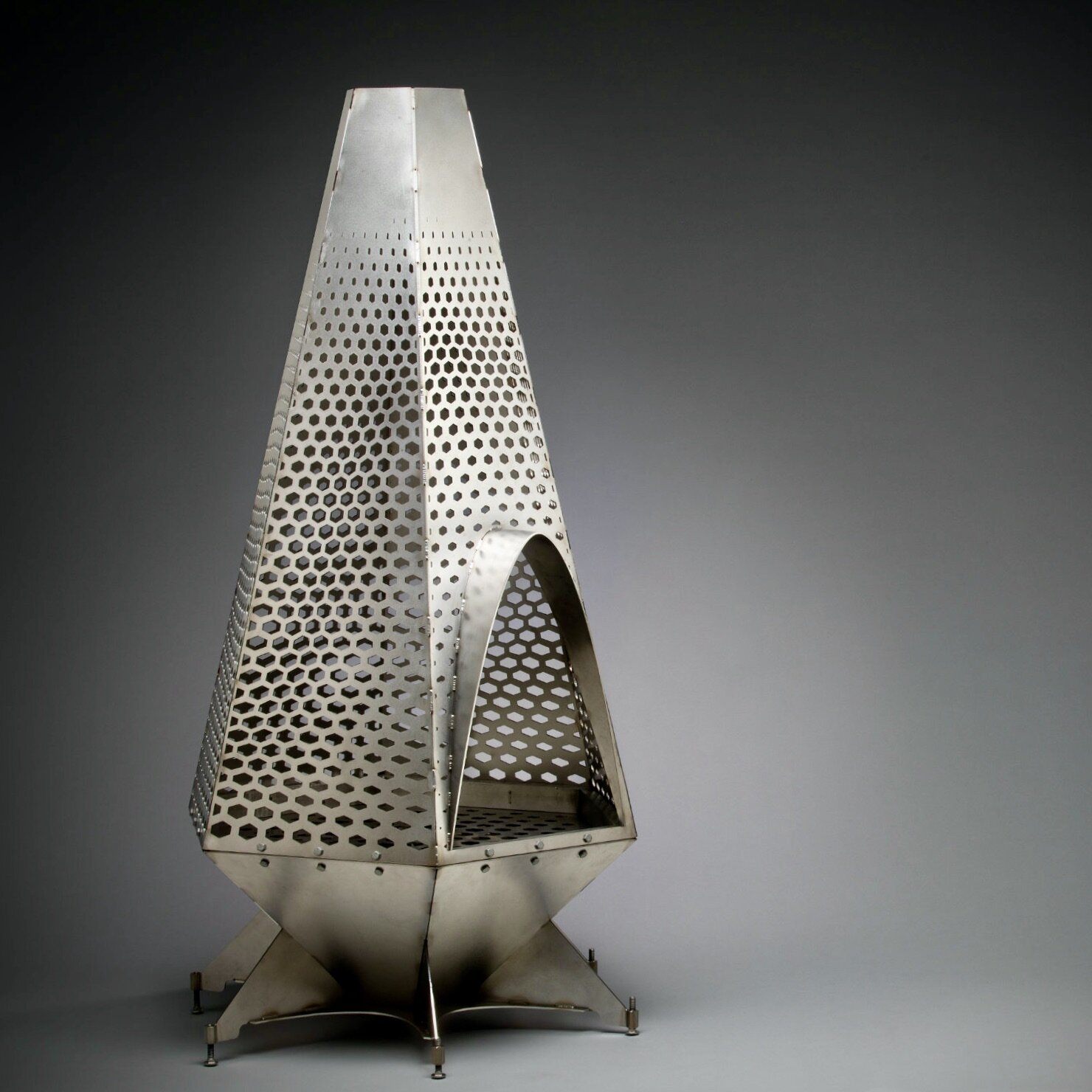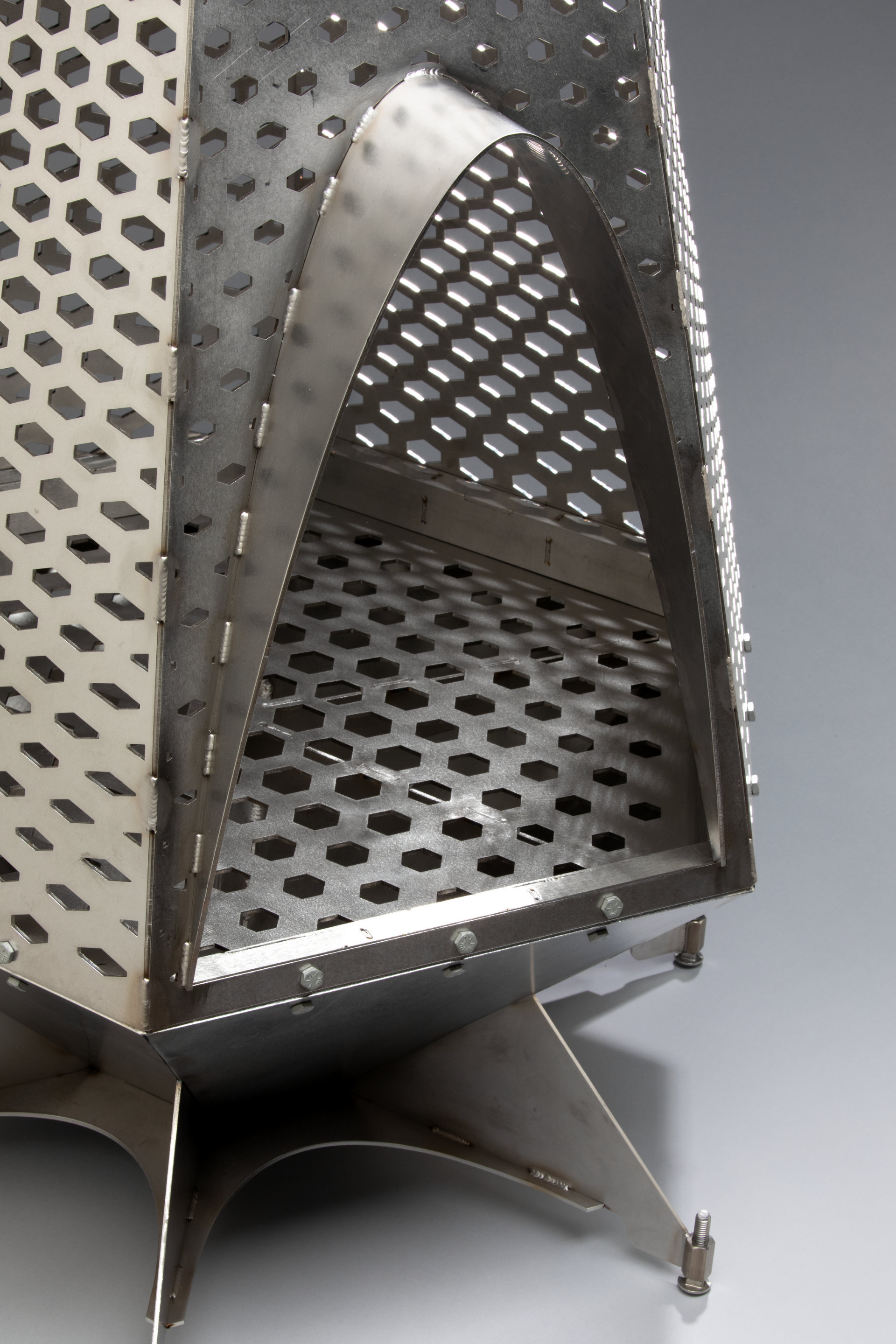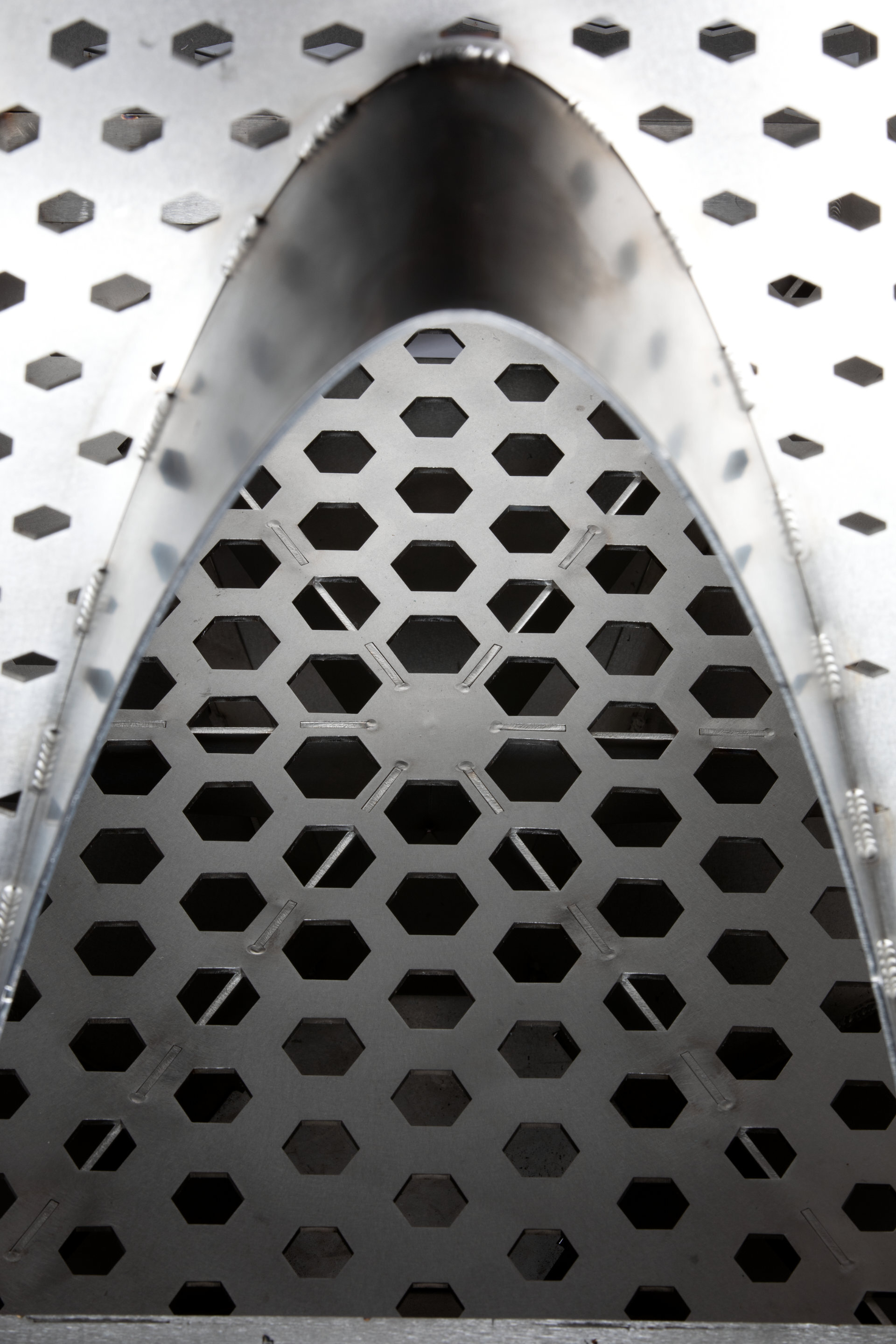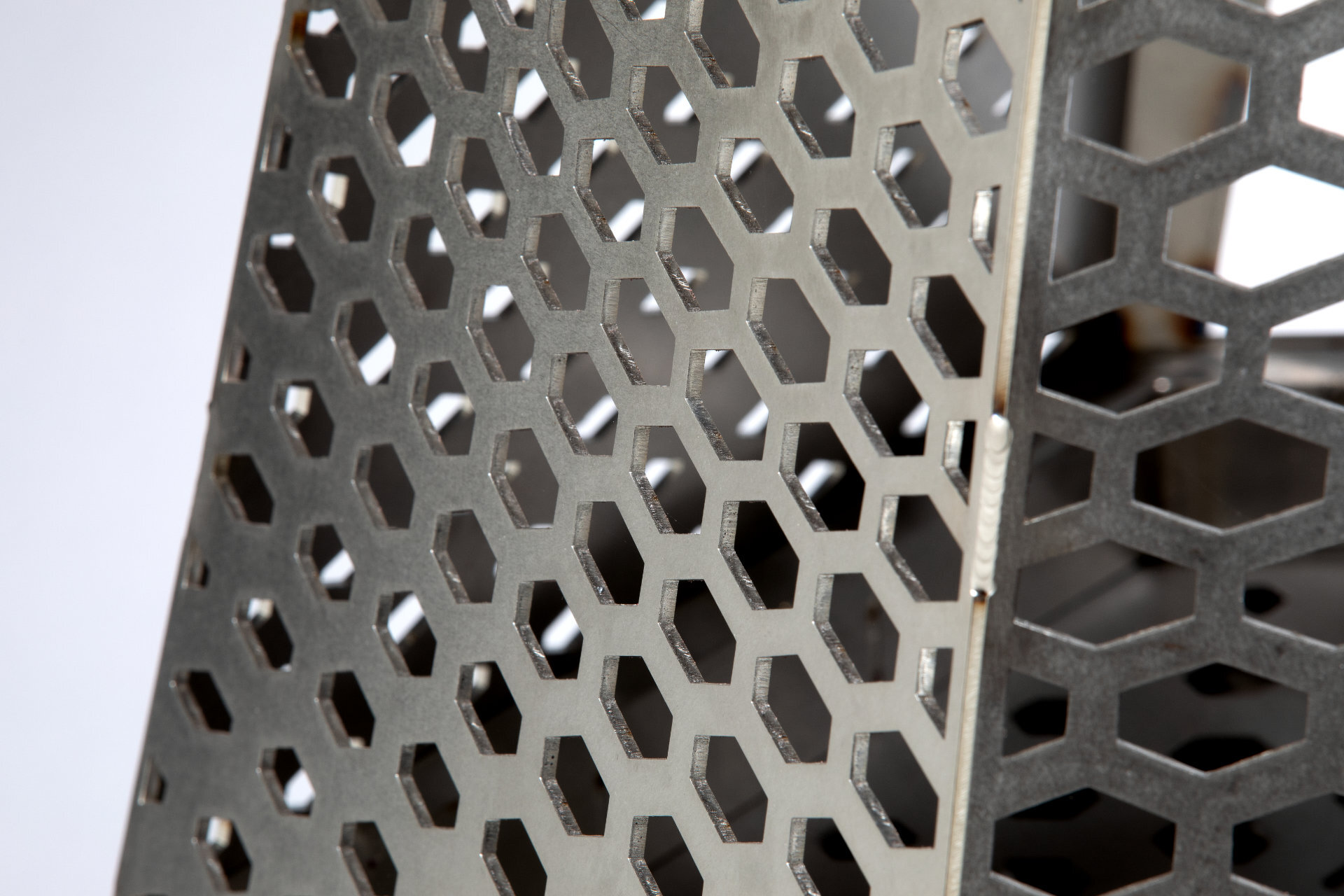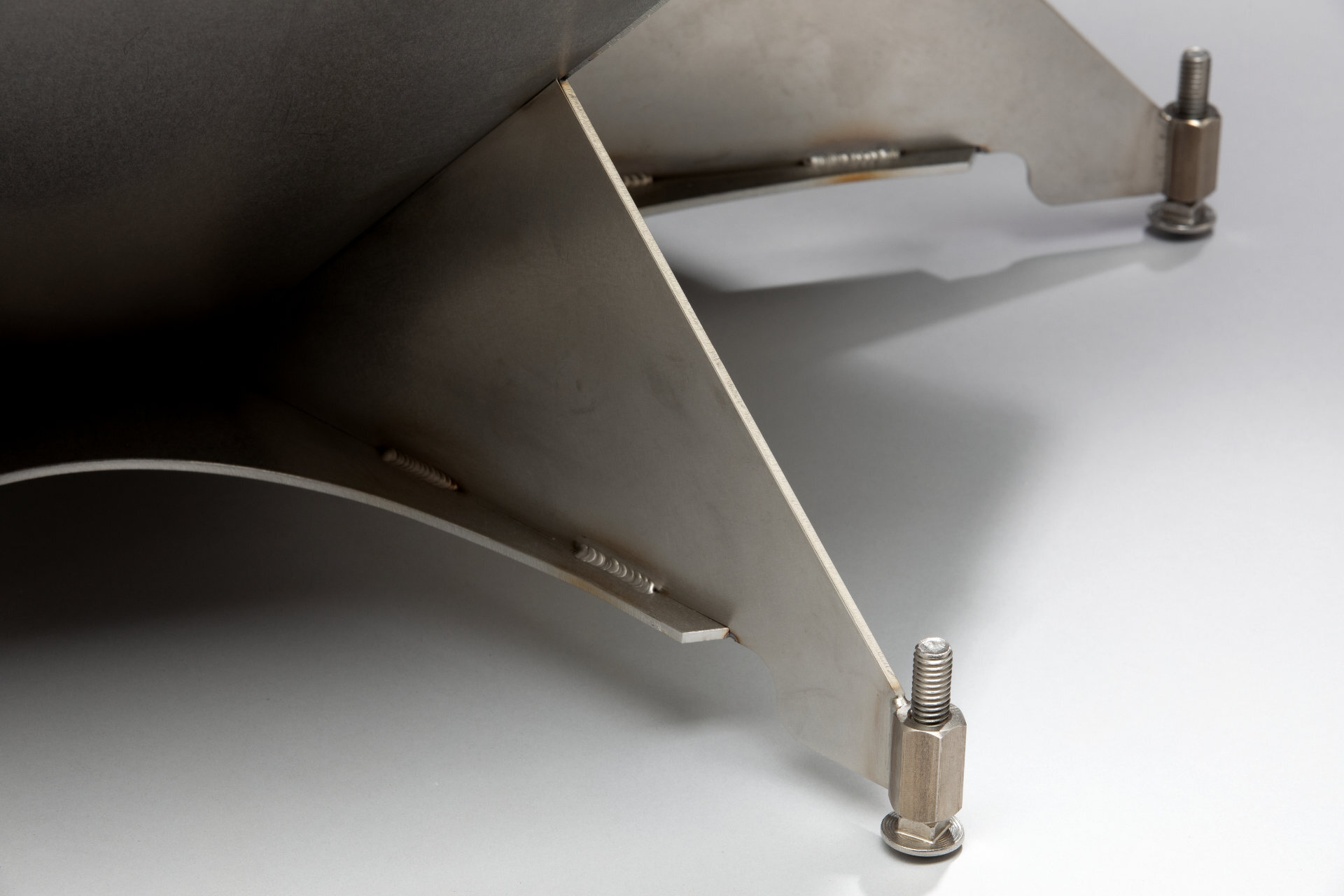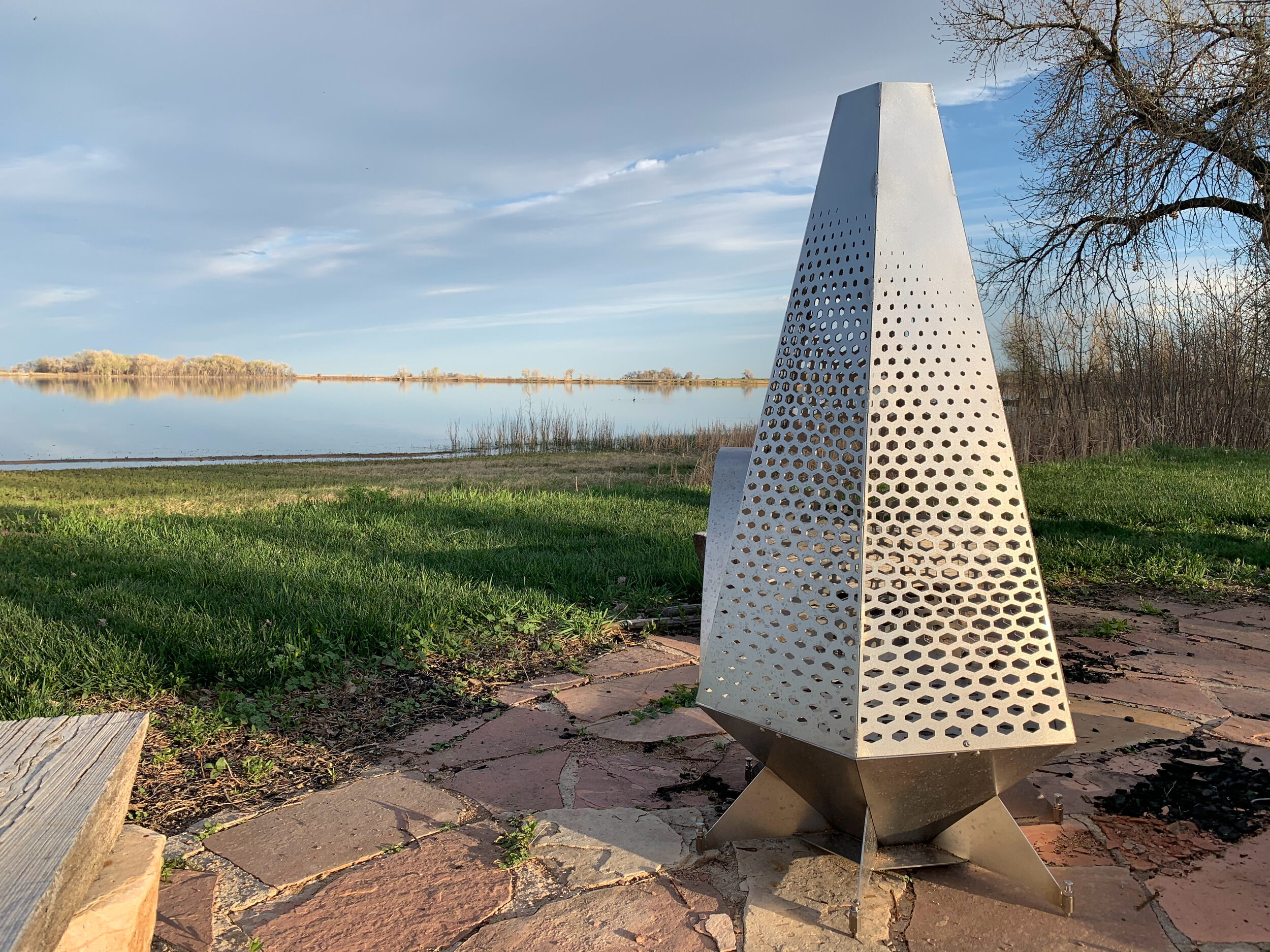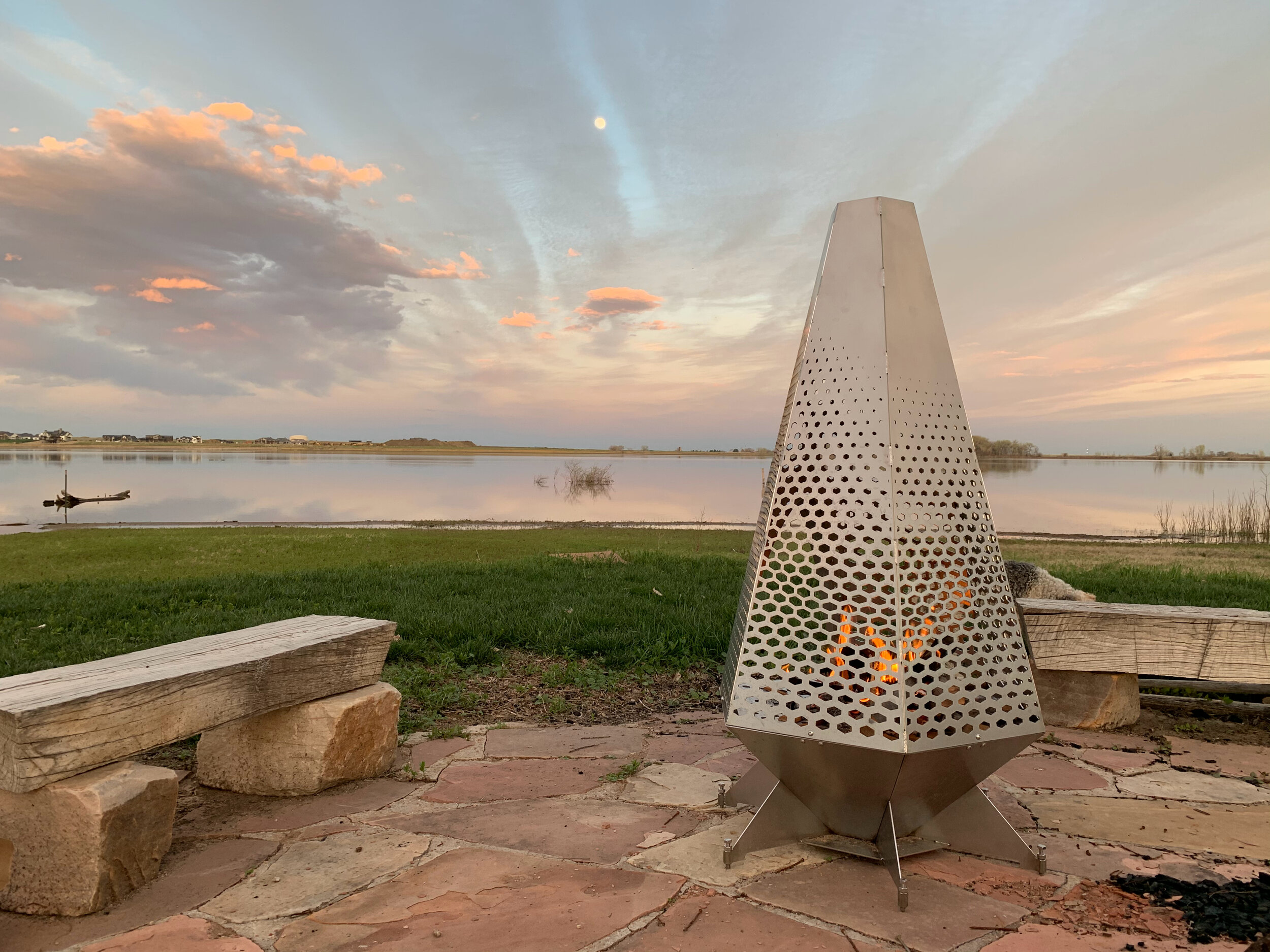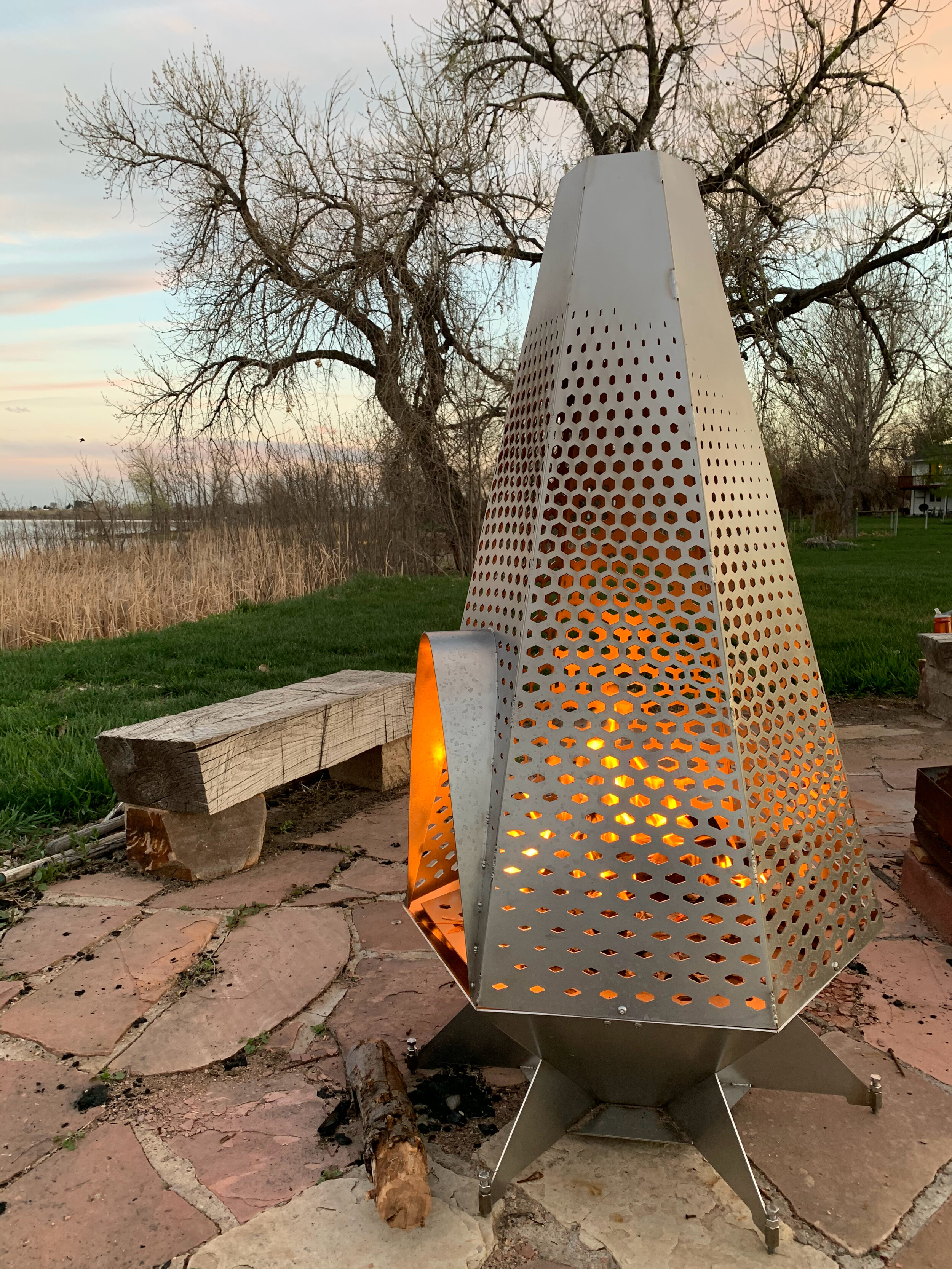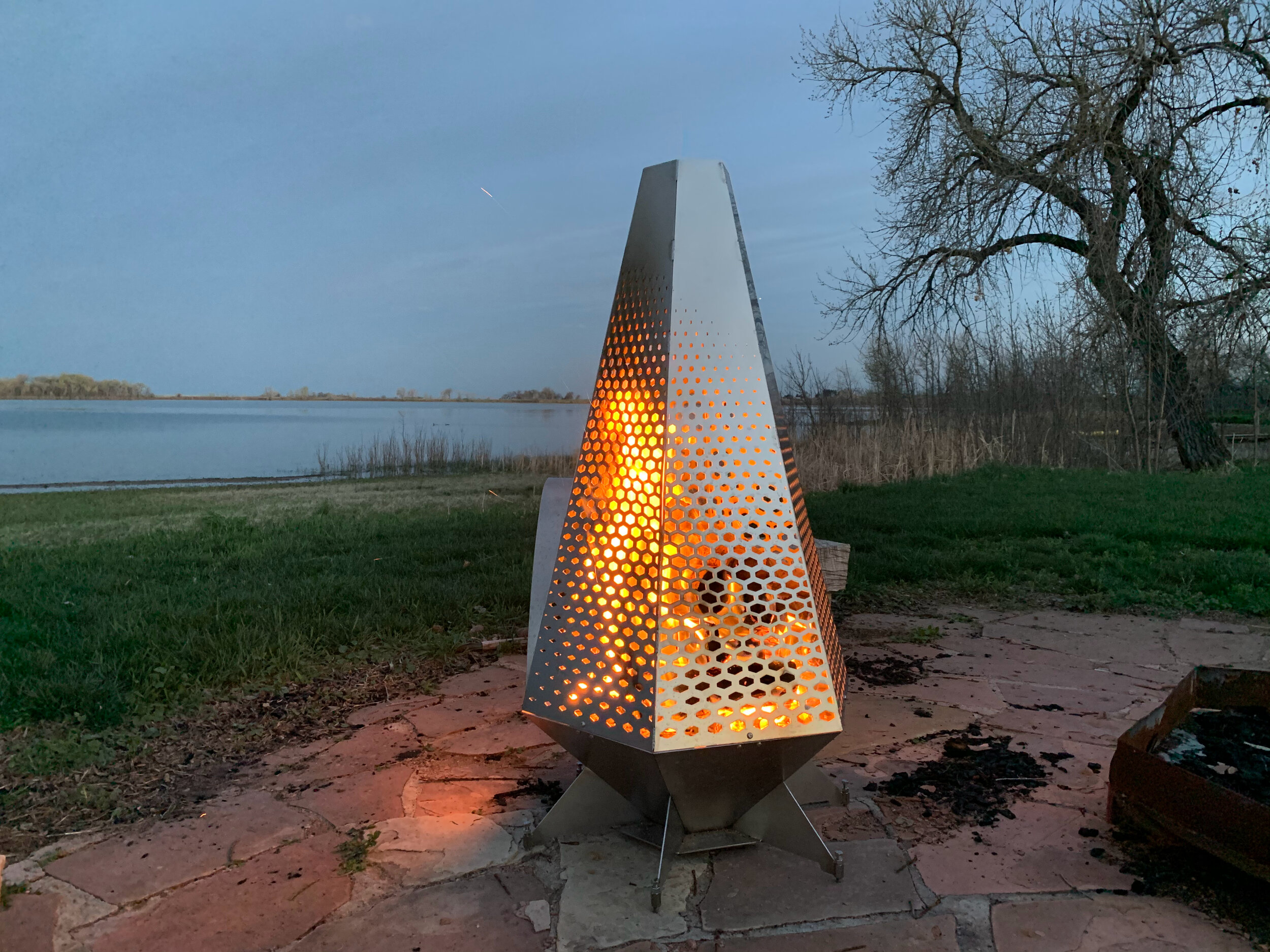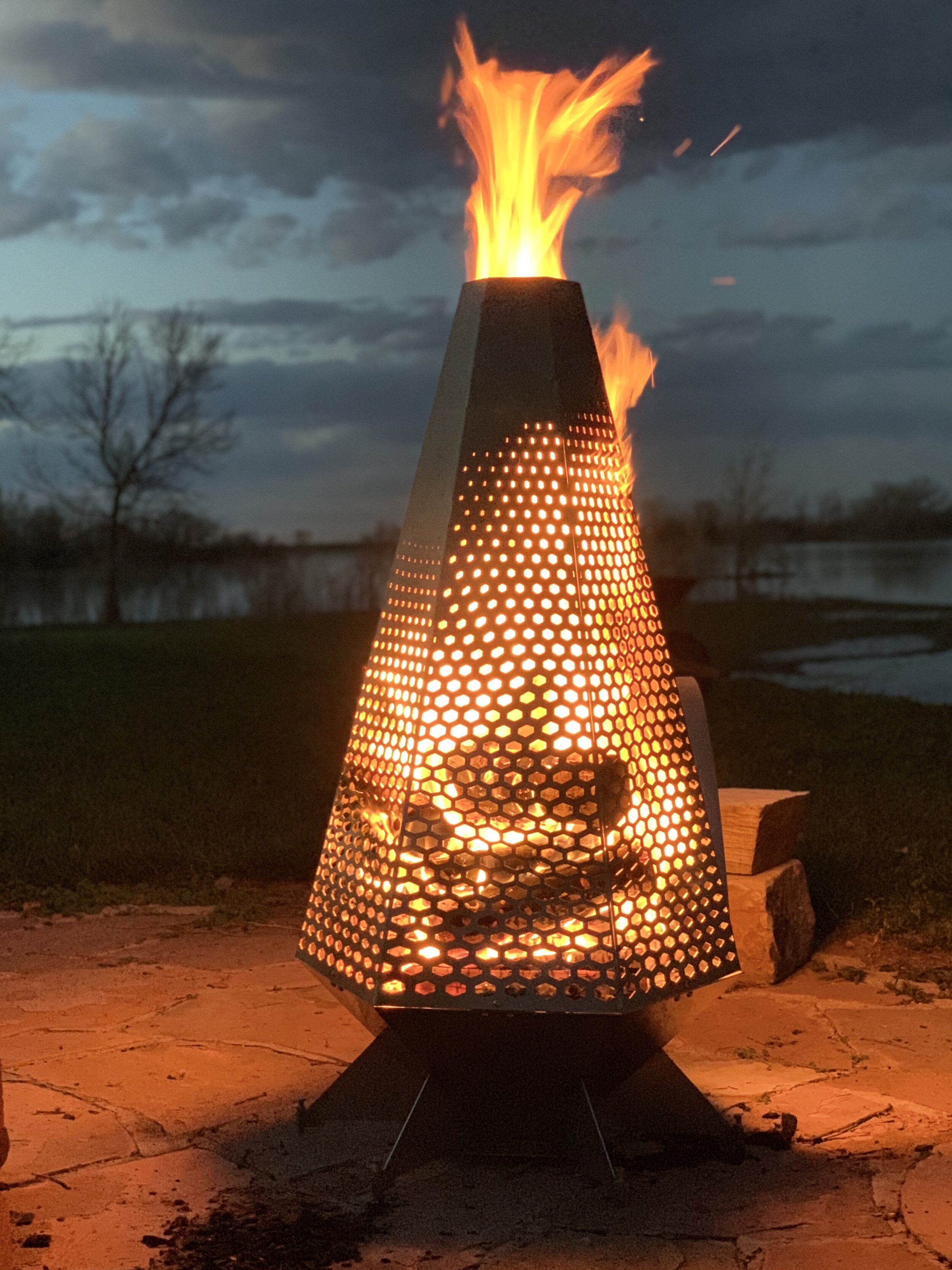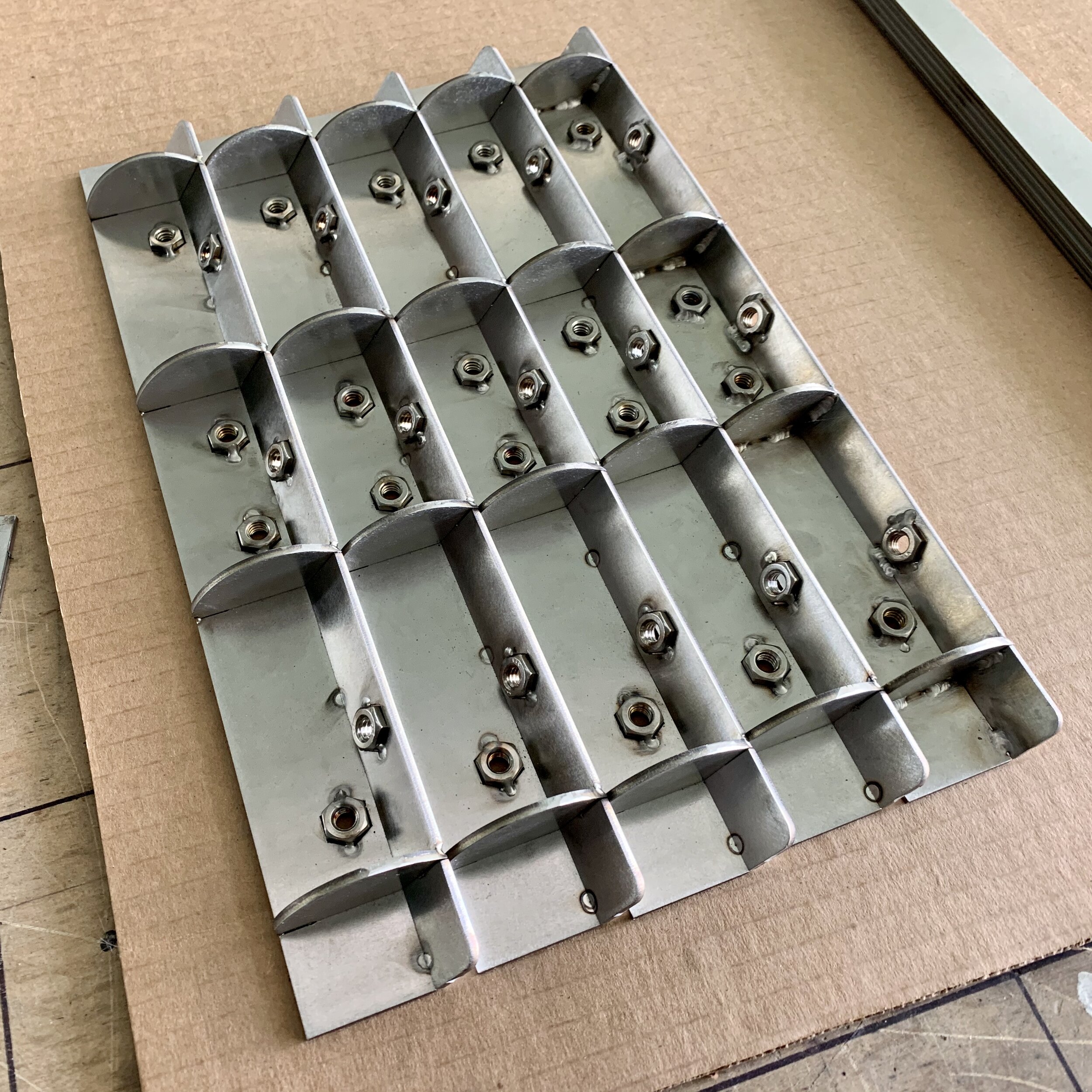Once I decided the CinderCone required an ash door to clean out the fire basin, it was pretty self-evident that some tools to facilitate the process were in order. That, and my own set of tools was pretty homely and long in the tooth. I elected to run with the hexagon motif and stick with solid stainless for the material.
The Poker/Hook. Went with hexagonal rod for the shaft to really drive home the idea that Hexes Are Awesome.
Shovel. 11 gauge stainless steel scoop with tab and slot construction.
And… the tongs. Challenging design, but worth it.
With the tools designed, I realized they needed a place to live — one that complimented the CinderCone but was capable of standing on its own, too.
A “garage” to store the tools. The Hive!




